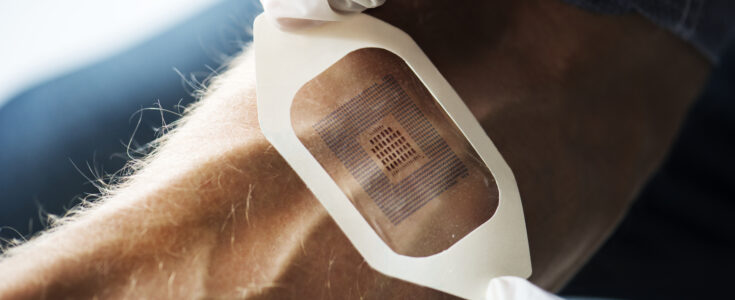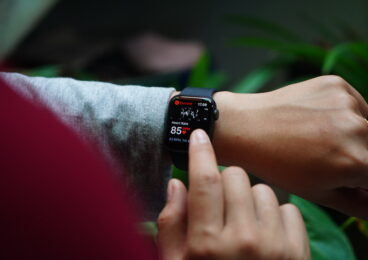
Wearable Biosensors Drive Demand for Testing

Today, consumers are digitally native. Their first step to receiving and sending information is through personal devices. They are the owners and catalyst of each decision they make daily – and technology has made this possible. We’ve seen consumer behavior impact everything from retail locations and product ingredients, to advertising budgets and packaging.
Now, technology is enabling consumers in many more ways than just what they can buy and how they can buy it. Consumers utilize technology to enhance their real-world experiences. They depend on technology to proactively react and predict within their current environments to enhance their activities. So, how does technology do this? The answer is through biosensors.
While these biosensors traditionally have been most prominent in hospital equipment, they are now common in smart buildings, IoT devices, and most of all wearable devices. Wearables with biosensors can analyze any human characteristic such as heart rate, exercise/sitting, sleep patterns, personal identification, blood glucose level and more.
Unlike conventional biosensors, wearable biosensors are physically attached to a person’s tissue, including skin, cornea, fingernails and more. The wearable biosensor can measure biochemical markers, such as sweat, tears, saliva, as well as interstitial fluids like sugar, salt, fatty and amino acids, hormones and white blood cells in addition to activity related elements while it is being worn.
Wearable devices with biosensors collect data and use that data to suggest actions or react to conditions. If the data collected by the biosensors isn’t correct or the algorithm that is ran isn’t correct, then the resulting actions from the wearable device will not be accurate and could even be harmful.
New innovations in wearable technologies present endless possibilities for consumer and business use cases in health, fitness, sports, and more. Devices powered by connected biosensors, software, firmware, and advanced algorithms can do many things, including enabling important new medical treatments, inform consumers about changes in their health conditions or patterns, provide real-time data-driven remedies and suggestions, and help athletes at the highest levels find new ways to improve their performance. Likewise, wearable biosensors create a wealth of new application and service opportunities for enterprises.
However, turning these opportunities into reality requires overcoming some complex challenges for quality assurance (QA) and testing – especially when it comes to ensuring the wearable technologies perform as designed in real-world use with humans. Apexon provides Wearable Biosensor Testing services to help companies overcome these challenges and get these products to the market. We have developed a specific methodology of best practices and identified medical grade devices to help clients with healthcare, fitness and sport-based biosensors.
The Testing Process Matters
Wearable biosensors are quite complex, especially considering the environments in which they reside, the types of data they collect and transmit, and the algorithms they use to suggest actions and react to conditions. As such, extensive testing and quality assurance (QA) protocols are needed.
Testing must occur at different levels – biosensor, environment, consumer and algorithm – to ensure success and create a successful go-to-market strategy. Apexon’s Wearable Testing Service enables solution developers to envision, plan and execute QA and testing under real-life conditions for wearable biosensors, devices, physical sensors, and connectivity.
Apexon combines a proprietary, proven methodology with the technology, hardware, and software needed to enable human subject-based testing of wearable biosensors in any environment. The first step is understanding what the client is trying to achieve and measure. For instance, a wearable biosensor might need to measure the V02 max, cardiac efficiency, heart rate variability (RRi) and blood pressure of the patient to determine whether surgery is needed or to create the best pharmacological treatment plan.
The client’s product prototype is run through a series of testing protocols and activity sets by performing different protocols of varying intensity and activity to develop measurements across many different physiological characteristics. Those include different environments, steady-state and dynamic pacing, lifestyle activities and more.
Data algorithms are then analyzed and validated to determine real-world accuracy and identify improvements to product design and performance. Finally, the testing protocols are repeated until they demonstrate that the product will deliver highly accurate biosensor readings.
Building Upon Success
To develop a “control set” of data, ground-truth and gold-standard measuring mechanisms are applied at the beginning of the protocol processes. This generates a continual measuring stick of testing accuracy and success. Components of the firmware can be adjusted during testing phases to create real-time feedback when biosensors aren’t correctly receiving or responding to information.
Medical-grade equipment is integrated into testing on human subjects to improve quality, develop a feedback loop, identify test parameters and enable rigorous testing. This allows rigorous testing of the entire product development lifecycle (PDLC) to account for different variables and perform a gap analysis.
The gap analysis provides validation of benchmarks, such as comparing new and old devices and chipsets. It validates chipset performance on pre-market prototype devices, as well as against competing devices and biosensors. Customer success is measured by being able to quickly start a project with a ready-made suite of objects, create custom labs, and work in an agile fashion to provide same-day, continuous results.
Forward Movement
New applications for wearable biosensors are being created daily. For instance, Apple’s latest watch can produce EKG results and will eventually create blood glucose readings. And Proteus has developed a medication that, when swallowed, provides a magnesium reaction.
As demand continues to heat up, time to market will be even more critical. But getting your device or application there first won’t do you any good without thorough testing for quality. If you have a wearable project that you want to bring to market, be sure to submit the form below and we’ll help you put it to the test.







